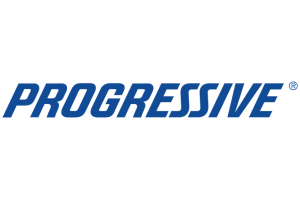
An HO-5 insurance policy is essentially a standard homeowners insurance policy with additional benefits and coverages. In other words, it's the premium version of homeowners insurance.
An HO-5 policy is an open perils policy. An open perils policy is a policy that does not state the perils the policy will cover, but rather it states the perils that will not be covered by the policy. So, if there is a peril mentioned in the policy, it will not be covered by the policy. The reason why the HO5 insurance is one of the best homeowners policies is that it's less restrictive in what is covered under the policy.
What is not covered by an HO-5 policy?
Because an HO-5 policy is an open perils policy, the only things that are not covered are the peris explicitly listed as exclusions. Here’s a list of some of the common exclusions in an HO-5 policy, meaning what isn’t covered.
- Earthquake
- Power failure
- Neglect
- Water damage (from flood or sewer backup)
- Changes in Law
- Intentional loss
- War
- Government action
- Nuclear hazard
- Theft when under construction
- Corrosion, smog, rust
- Mold/ fungus
- Deterioration and others
Some insurance companies give some leeway to some of the above exclusions. For example:
- Earthquake coverage may be endorsed on the policy
- Some ordinance and law coverage may be included in the policy
- Some types of water damage can be endorsed on the policy
- Some coverage for collapse may be included in the policy
- Some coverage for fungus, wet rot, and mold may be included in the policy
Differences between an HO3 and an HO5 insurance policy
It’s easy to get confused with the HO3 and an HO5 insurance policy. While the HO5 is an open perils policy, the HO3 is a combination of both open and named perils. Here's a chart that showcases the main differences between an HO3 and an HO5 policy.
| Coverage | HO-3 policy | HO-5 policy |
|---|---|---|
| Dwelling | Open perils | Open perils |
| Personal belongings | Named perils | Open perils |
| Replacement type | Actual cash value | Replacement cost |
In both an HO3 policy and an HO5 policy, the structure of the home is covered under an open perils policy.
However, in an HO3 policy, your personal belongings are covered under named perils. In an HO5 policy, your personal belongings are covered under an open perils policy.
An HO5 policy also includes replacement cost coverage rather than actual cash value like an HO3 policy. What does this mean? If your laptop that was $1,500 is destroyed in a fire, you’ll be paid out $1,500 under the HO-5 policy because that’s the replacement cost. Under an actual cash value, you’d only receive compensation for the item’s depreciated value.
Because the HO5 policy offers better coverage than an HO3 policy, it’s more expensive than the HO3. For this reason, HO3 is more popular than the HO5. Any limitations in the HO3 can be easily overcome by endorsing onto the HO3. At the end of the day, when deciding between an HO5 and an HO3 policy, take into consideration your financial situation and the type of coverage you require.
How to get an HO-5 policy
An HO-5 policy may not be an option in certain areas and from certain insurance companies. If you’re interested in getting an HO-5 policy, you’ll need to talk with your insurance agent or insurance company.
You’ll want to ensure the companies you’re considering are highly regarded by other homeowners.
To see which companies other homeowners recommend, visit our rankings of the best homeowners insurance companies. Use the filters and enter your zip code to personalize the list based on your needs!
The content on this site is offered only as a public service to the web community and does not constitute solicitation or provision of legal advice. This site should not be used as a substitute for obtaining legal advice from an insurance company or an attorney licensed or authorized to practice in your jurisdiction. You should always consult a suitably qualified attorney regarding any specific legal problem or matter. The comments and opinions expressed on this site are of the individual author and may not reflect the opinions of the insurance company or any individual attorney.







